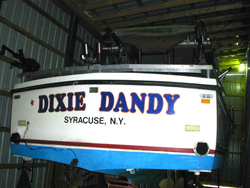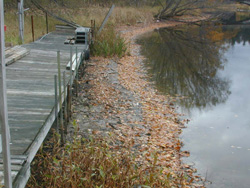Show All » 2007 » Archives
Saturday, November 10, 2007Dry Dock OSR #1-2007
The Dixie Dandy has been hauled from the water and is snuggled into her winter berth in the main building at Mike's Marina. Once again our 31' JC has performed well and now deserves a few months rest. As we do every off season general preventive maintenance procedures will be carried out. The wear and tear associated with our "fish every day" season schedule requires an absolute commitment to insuring our vessel is fine tuned to the rigors waiting in the form of the 2008 season. Simply put, our customers deserve the best.
|
|
|
This record low water thing has made it difficult for salmon to complete their migration to the hatchery. While tons of fish returned to the
On another interesting note, the hatchery has already harvested plenty of Coho eggs and could increase Coho stocking numbers to supplement a Chinook shortfall if this should become necessary. Catching more of the speedy "silvers" would be terrific. A huge advantage a stocking program has over a totally wild fishery which is most susceptible to the whims of nature is the ability to make adjustments. Flexibility is the key to success. We should be wary of "wild fish only" methodology proposals for
It looks like the DEC will be ordering a truly state of the art fish marking system which is housed in a mobile over the road configuration. The system is capable of marking 60,000 fish in an eight hour period. This is going to allow us to determine just how many wild fish are returning to the tributary streams. We know that millions are naturally spawned each year but we are not sure how many reach adulthood. The new system will provide the answer. How do you maintain the world class status of the





